SUMMARY
This is AI generated summarization, which may have errors. For context, always refer to the full article.
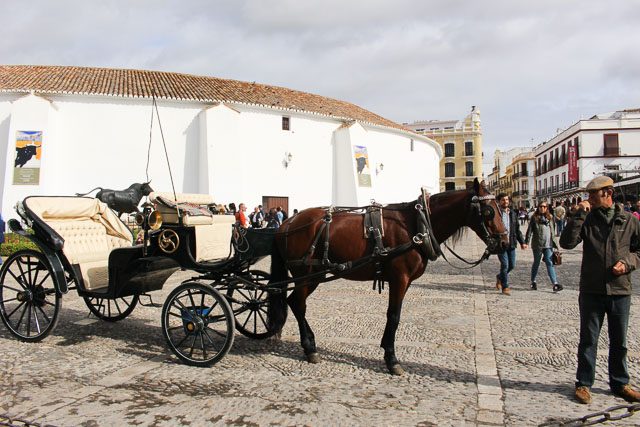
Through the large glass paneled windows blurred by the cold mist of the Andalusian winter, the clip-clop of well-shod hooves from the carriage horses striking the solid cobblestones streams in muffled and mellow. Dialogue swells across the dusty tavern cascading along the cavernous bar table. Like his father had done in the past, he now 70, with wispy wild silvery hair, invites customers in for a free flowing chatter while offering them a drink or two in his proud bar.
Not far from where I was sitting, old men happily clicked glasses and sipped their sherry. Overhead, on wrought iron hooks dangling from the ceiling, are Spanish sausages, cured legs of Iberian ham and strings of garlic.
On the concrete walls, a ramshackle gallery displaying grainy pictures of Ronda taken on a bright sunset; bullfighters posing alongside famous writers that once sojourned the town, some yellowed newspaper clippings, a calendar with the photo of Spain’s weeping patron “La Macarena” and two wooden casks filled with wines that date back vintage times.
There is nowhere in the world quite like this tavern. I have to admit that despite some modern touches, the flashy LCD screen and few portable credit card swipers, the place feels ancient. For all I know, I could be sitting on the same chair where Ernest Hemingway once sat.
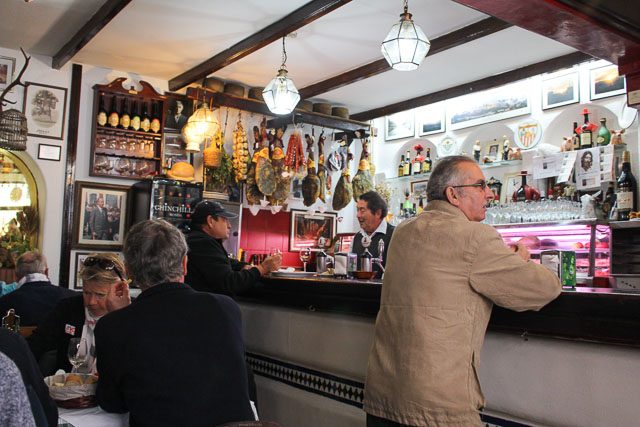
Ernest Miller Hemingway, the 20th century novelist and Nobel Prize winner wrote in his 1932 book Death in the Afternoon – “There is one town that would be better … to see your first bullfight in if you were only going to see one and that is Ronda.” I have never been into a bullfight before, but I reasoned to go to Ronda on a different purpose. After all according to him, it’s also a place “… where you should go if ever you ever go to Spain on a honeymoon or if you ever bolt with anyone.”
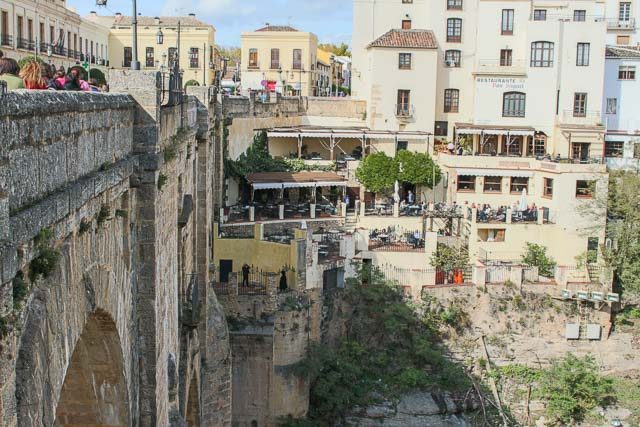
As one of Spain’s old pueblo blancos or white villages, Ronda is a two-hour drive from Seville. Established in the 9th century BC, those who came to the town never wanted to leave. There were of course, the primitive dwellers, then the Romans came and later on, the Moors who inhabited the top of the cliff. By 15th century, the latter had all been kicked out from the palace and the mosque they built, and finally driven out of the village when the Crusaders conquered the town taking control of the water supply at the bottom of the canyon.
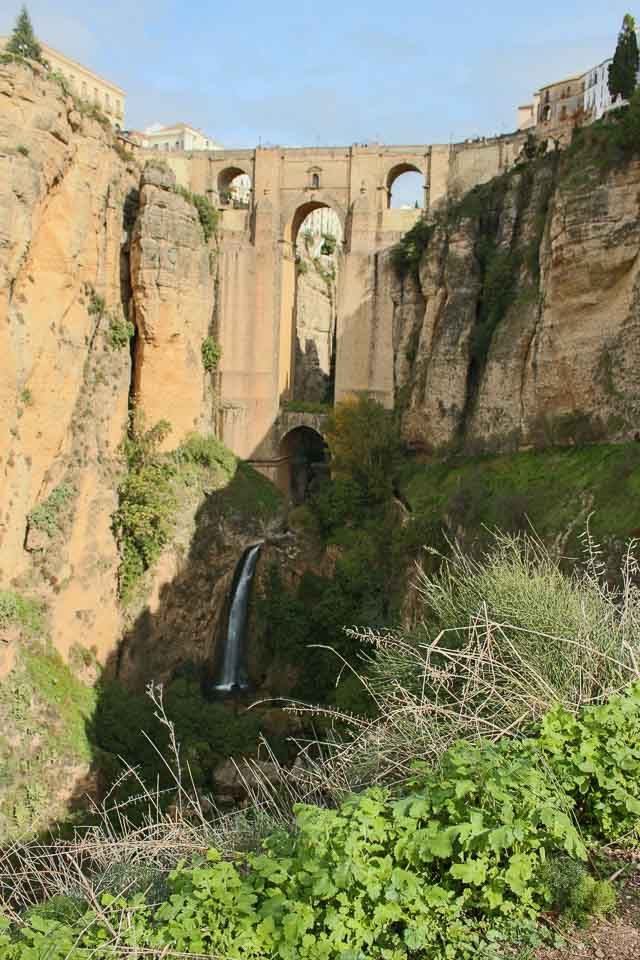
Needless to say, the town is famous for its dramatic location – perched on an inland plateau as well as being the cradle of modern bullfighting. With its beguiling white-washed houses, Moorish and Roman antiquities and the lively patchwork of architectural wonders, it was easy to comprehend why the town of Ronda has been favored by romantics and artists for centuries.
I arrived in Ronda 92 years after Hemingway first came. As it was my first trip, it seemed appropriate to take the scenic road which took me a half day’s drive from Seville; passing several towns on a journey through perilous craggy cliffs. At the mountain top, elements throw tantrums at you – with fog obscuring the way and rain waxing the road, yet without courage and discovery, the spirit withers.
There were few tourists when I strolled along Paseo de E. Hemingway. If it wasn’t for the weather, it can all be too crowded in this pedestrian walkway that runs between Ronda’s bullring, Plaza de Toros, and the busy square of Plaza de Espana, which overlooks El Tajo, the 300-foot deep canyon that splits the pueblos old and new district.
Back in the day, one could see Hemingway moseying up and down the streets during his time in Ronda. Late in the afternoon when the sun starts to turn back for the day, he would be in some bar or restaurant immersed in a conversation with the locals and with travelers who were always fascinated by the old writers stories on local lore.
If one should imagine Hemingway’s life in Ronda, one must make an effort to come to terms with bullfighting. An amusement of theatrical display and an amalgamation of life’s suffering and glory, passion and death, and a kind of “horn-to-groin” sport.
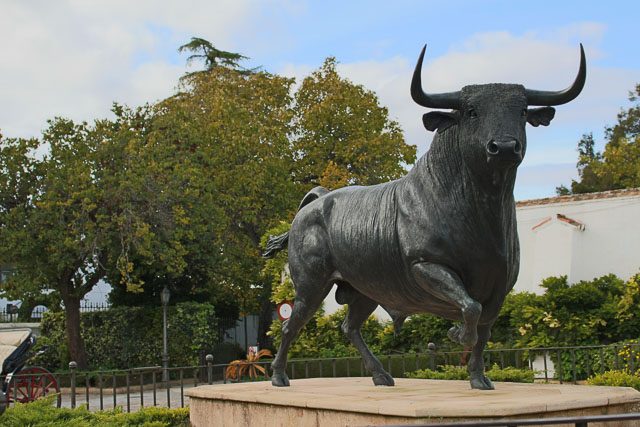
That night at the Hotel La Fuente de la Higuera, a former 18th century olive mill that magnificently dwells on a hillside not far from Ronda, I dreamt of my first bullfight. Between the heat and the raving crowds, it was all too dizzying.
My heart skipping a beat, I fixed my gaze on the torero. A faint zephyr blows his red cape as he struts toward the panting and now powerless beast in the center of the ring – a blinding sword in hand, a bull’s ear drenched in blood sprinting towards me…I arose from my bed panting the like bull in my dream; opened the windows of my room letting the chilly breeze transport me back to reality.
Bullfighting is synonymous to animal cruelty but to fathom Spain’s national sport in any real way, I attempted to understand what los toros mean to the Spaniards.
Hemingway may have expressed it differently when he said, “There are some things which cannot be learned quickly, and time, which is all we have, must be paid heavily for their acquiring. They are the very simplest things and because it takes a man’s life to know them the little new that each man gets from life is very costly and the only heritage he has to leave.”
The next day, I decided to idle half of the day away at the hotel. I didn’t mind that the bathtub was made of copper and some furniture didn’t match up perfectly – another reason why the room felt relaxed and somehow effortless.
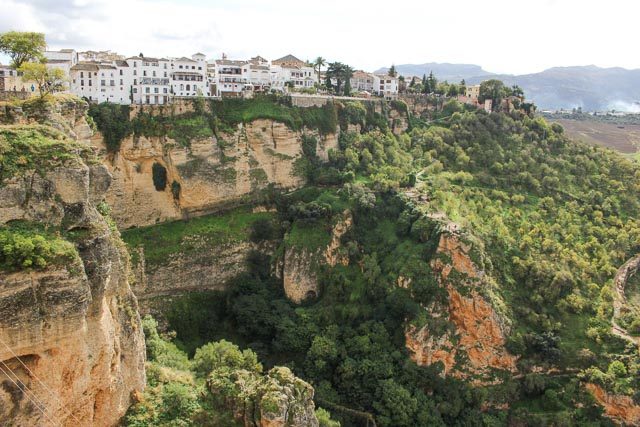
During a walk in the patio, I could see the Andalusian landscape unfolding, with views of Ronda and the nearby craggy terrain all humpbacked in a poetic manner. The fast moving clouds seemed to smear the scenery but a glimpse at the olive trees dampened by last night’s rain gave an invigorated feeling. It seems the place speaks out to you, urging one’s consciousness toward a new resolve.
I drove back to Ronda that afternoon. But I didn’t come for the bullfight. Instead I decided to appreciate Ronda by letting my feet take me, with no plans in mind of where to go next. Finding myself at the main square in Plaza de España on a cloudy day, I had another glimpse of the plunging El Tajo canyon. Not far from where I was standing, the bells at the nearby 15th century Holy Spirit church tolled.
Passing a few tourists in the Puento Nuevo, the bridge that patches together the two sides of town, I continued until I reached the old quarters. Getting away from the busy lane, it was a great feeling to be absorbed in one’s way of sightseeing. How close can you get to Ronda’s soul when you hear the noise of everyday life – a dog barking on a grilled window from inside the house, a creaking sound of the church’s large wooden doors opened, a couple arguing from a distance, kids waking up from a siesta and the trotting sound of an approaching horse carriage.
Before heading back, I descended into the canyon going down 365 steps. The serene river, the Moorish ruins and the cliff serving as the backdrop – Ronda is not just about seeing your first bullfight or spending one’s honeymoon or even by bolting with Hemingway’s words. It’s about feeling a whole new sense of discovery and climbing back to the top, where one should likely begin. – Rappler.com
Jan Sevilla is a quixotic nomadic chick and writer by accident with some difficulty of having her subject agree to her verb. Catch more of her travel murmurs at: najsevilla.blogspot.com
Add a comment
How does this make you feel?
There are no comments yet. Add your comment to start the conversation.